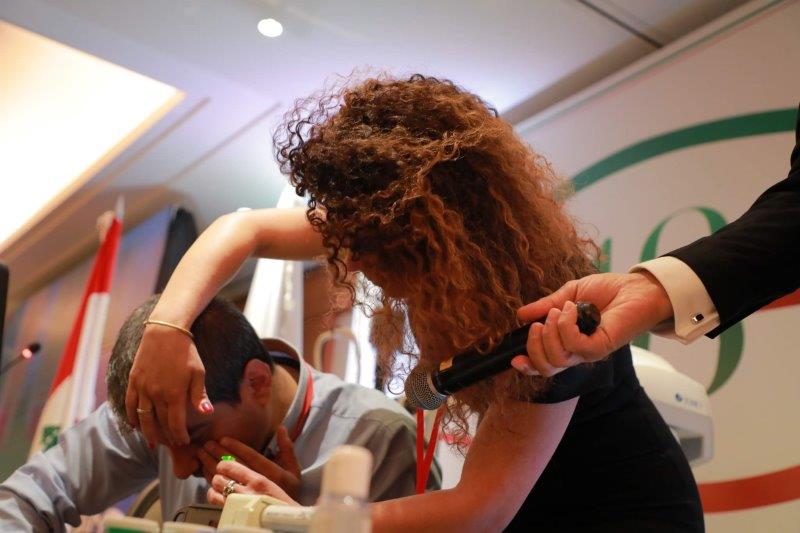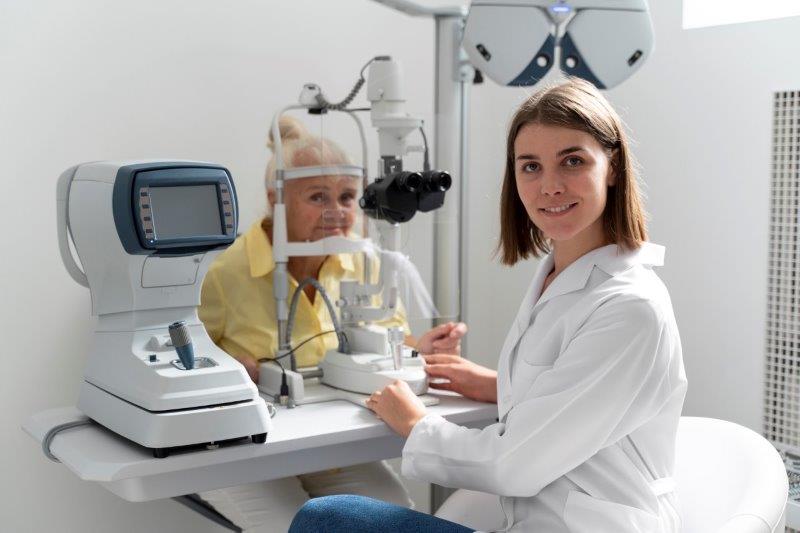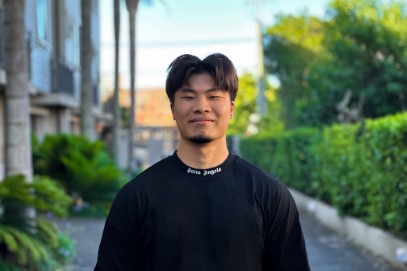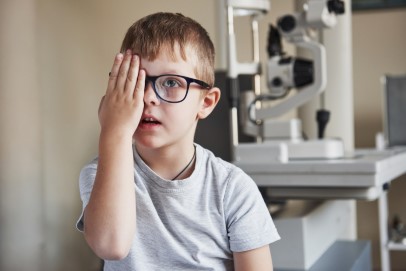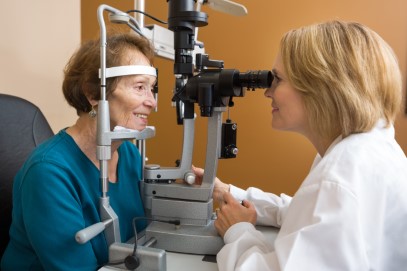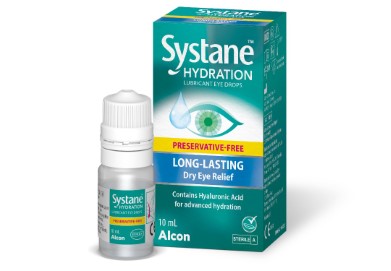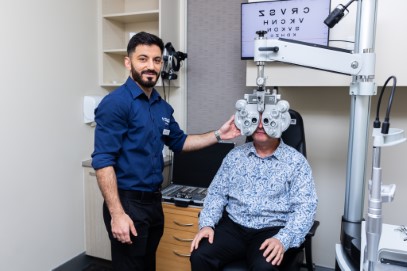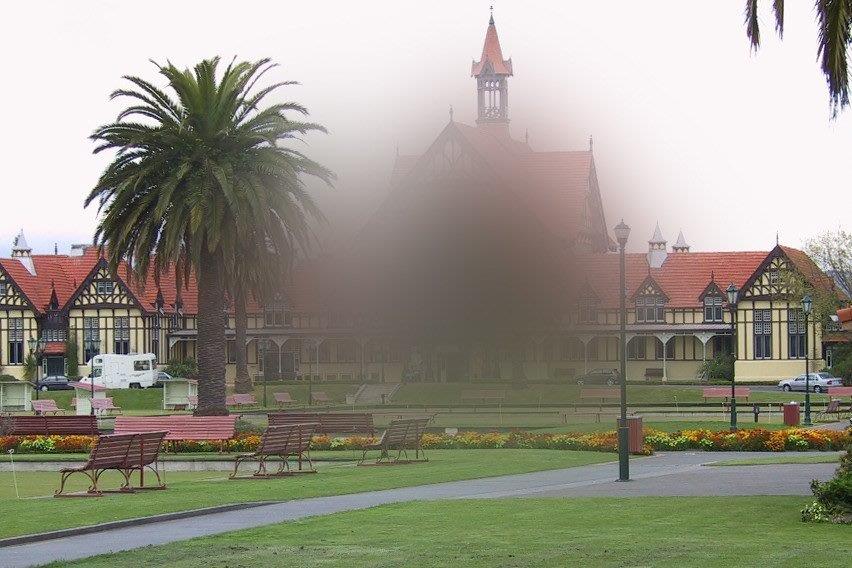Getting to grips with scleral lenses
Years ago, while pondering whether or not to invest in an OCT (I know, it’s mad to think it was ever up for debate!) I attended the Topcon OCT conference in London. During a coffee break, I bumped into optometrist Brian Tompkins, who mentioned he was running a workshop on using OCTs to aid scleral lens fitting. At that point in my professional life I had never fitted a scleral lens, nor did I intend to, but I figured it would be common courtesy to attend. True to his own inimitable style, it was an entertaining and educational presentation. His take-home message was, “Anyone can fit sclerals”. Thus, the seed was planted.
Deciding then to add ortho-k to our practice’s list of myopia management strategies, our next investment was a topographer. Topcon had just launched its new Myah instrument, which seemed to tick all the boxes for me, with topography (including keratoconus screening and pupillometry), axial length measurement, myopia progression reports (for analysing treatment efficacy) and a suite of dry-eye assessment tools.
All the gear, new idea
Having invested in both the Myah and the Topcon DC4 slit lamp, my plans to start fitting ortho-k and sclerals were immediately scuppered by the pandemic, Brexit and some software issues. So instead, I decided to use the time to complete the Myopia Profile ortho-k course. I also picked Brian’s brain about how to start a speciality lens service. He gave me some great advice and pointed me towards No. 7 Contact Lens Laboratory’s Ian Sexton. No. 7 had just launched an irregular cornea specialist site, which gave me access to training videos and webinars on their full suite of lenses, including rigid gas permeables (RGPs), mini sclerals, hybrids and sclerals. Ian’s advice was to start with a mini scleral, which can be fitted without the need for topography. He recommended the ‘Comfort 15’, a lens that can be used for high astigmats, keratoconus patients and dry-eye sufferers. With a patient in mind, I decided this is where I would start.
My patient was a high myope and astigmat. She had previously worn toric soft lenses but wasn’t happy with the acuity or comfort. We discussed mini sclerals and she was keen. As a novice, my knowledge on how to assess the fit and adjust the fitting parameters was limited and I relied heavily on No. 7’s support. But I was able to record images of the edge fit on the DC4 and I could image the landing zone, the central profile of the cornea, tear reservoir and lens on my OCT. These proved invaluable for allowing the team at No. 7 to adjust fit. It took a couple of attempts, but in the end we had a pair of perfectly fitting lenses and a patient delighted with the comfort and the acuity. First fit done!
Who’s your Daddi?
Another suggestion Brian made was to join some online scleral lens forums. It was through one of these that I heard about the European School of Scleral Lenses (Euroscole). Founded by an Italian optometrist who specialises in scleral lenses, irregular corneas, myopia management and orthokeratology, Daddi Fadel is internationally recognised as a key figure in the area of speciality contact lenses, with multiple peer-reviewed publications to her name as well as authoring a number of books on of scleral lenses.
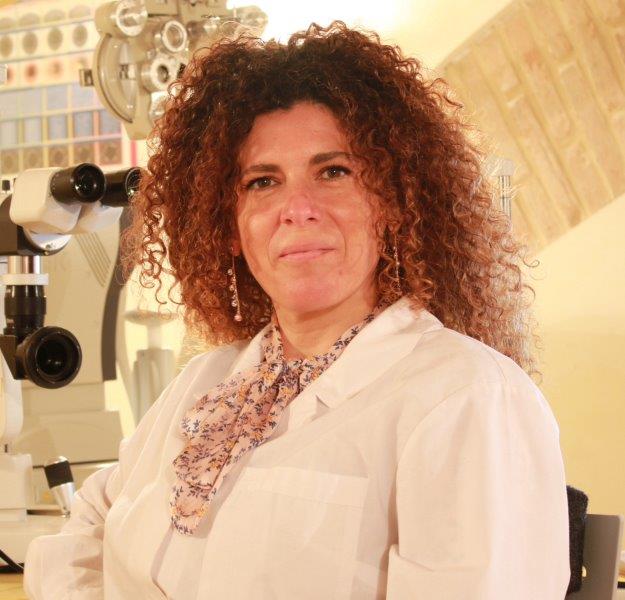
Euroscole's Daddi Fadel
Fadel realised that Europe, the Middle East and Africa have a shortage of scleral lens practitioners compared with the US, a discrepancy she felt was due to the fear factor associated with speciality lenses and the lack of education on the subject. So she set herself the goal of bringing her scleral lens skills to the masses, founding the Euroscole project in 2021. The project’s pair of two-day workshops are a few months apart and are currently delivered in 20 countries.
Fadel’s whirlwind sclerals tour started in Ireland, coinciding with the arrival of Storm Franklin. Thankfully everyone made it to Dublin, a little bedraggled but in one piece. Sharing the stage was Cian Gildea, a clinical optometrist from Dublin’s Wellington Eye Clinic who shares Fadel’s passion for irregular corneas and speciality lenses.
The day-one morning session was three hours of lectures covering the basics of scleral lens fitting, including when and how to fit, indications, contraindications, patient selection, corneal and scleral topography, patient observation, lens handling and how to build a scleral lens practice. To a novice scleral lens practitioner like me, it could have been overwhelming, but I felt it was delivered perfectly, leaving me thirsty for more.
A (bes)poke in the eye
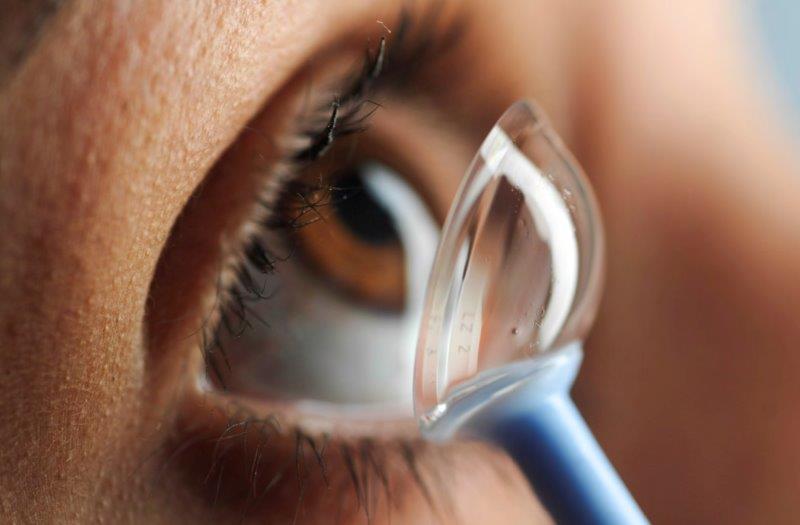
The afternoon’s practical session began with sponsor demonstrations of some of the latest instrumentation to aid fitting and analysis of scleral lenses. Both the Oculus Pentacam (with corneal scleral profiling) and Eaglet-Eye Eye Surface Profiler enable corneal and scleral topography for customising scleral lenses*. The benefits of these devices when analysing irregular corneas is plain to see and they can also aid the diagnosis of a number of conditions associated with irregular corneas. But where they really come into their own is in simplifying the process of identifying which scleral lens is most likely to fit which eye. The software in each device is linked to a number of manufacturers, enabling the practitioner to order a huge variety of bespoke lenses. As you would expect, this tech isn’t cheap, and while it’s not essential for starting a scleral lens practice, I think, like OCTs, it will become essential for practitioners managing irregular corneas.
Topcon was also on hand to show us the benefits of imaging the anterior eye to aid the assessment of lens fit and how OCT takes the guesswork out of assessing landing zones, edge profiles and corneal clearance. We were also treated to a demonstration of the new Myah, which is limited to corneal topography, but is perfectly adequate for ortho-k and mini scleral lens fitting. Plus, it has the benefit of a suite of dry-eye and myopia-management tools. The afternoon’s practical session also afforded us the opportunity to fit and assess each other, which helped eliminate that fear factor around the process.
The bigger picture
Day two began with presentations by Fadel and Gildea on lens care, hygiene, solutions and patient education, before going on to compare sclerals vs other lenses, sclerals vs keratoplasty, scleral lens complications, digital photography and videography, photo documentation, patient education and lens material selection. This concluded the theory section of the course, which had been comprehensive and was ideal for anyone new to scleral lenses or in need of a refresher.
The day-two practical session saw us imaging, fitting and assessing each other. Gildea also brought in a keratoconic young man who, when we imaged him, had toricity which exceeded expectation and was beyond the range of our fitting sets. Nevertheless, he was kind enough to let us fit him with the closest available lens and assess what that imperfect lens looked like in situ. A necessary experience, I felt, for when troubleshooting our own patients.
Another course sponsor, Scope Ophthalmics had been on hand all weekend, with its array of products for treating ocular surface disease, the management of which is hugely important if a successful scleral lens fit is to be achieved. Scope’s representative, Steve Betts, was also a willing volunteer, who allowed us to demonstrate our newfound skills on fitting him. Fair play, Steve!
The task ahead now is to identify and fit our own patients and develop our skills, before returning to complete Euroscole’s advanced modules in September. If the rest of Fadel’s grand tour is as successful as her Ireland stop, it’s only a matter of time before the numbers of scleral lens practitioners in Europe, the Middle East and Africa begin to swell!
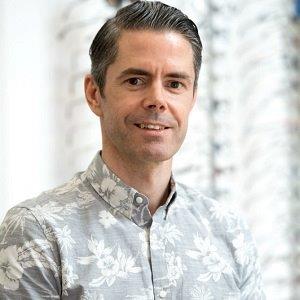
Lorcan McGarry worked in New Zealand, Scotland and Northern Ireland before establishing Argus Opticians in Donegal, Ireland, with his wife Kathleen in 2006. He has professional certificates in medical retina and independent prescribing and his other professional interests include myopia management, dry eye disease and scleral lenses.
*Ed’s note: Budding Kiwi scleral lens might like to also consider the sMap 3D, available from Corneal Lens Corporation, https://eyeonoptics.co.nz/articles/archive/new-smap-3d-at-greenlane-clinical-centre/










